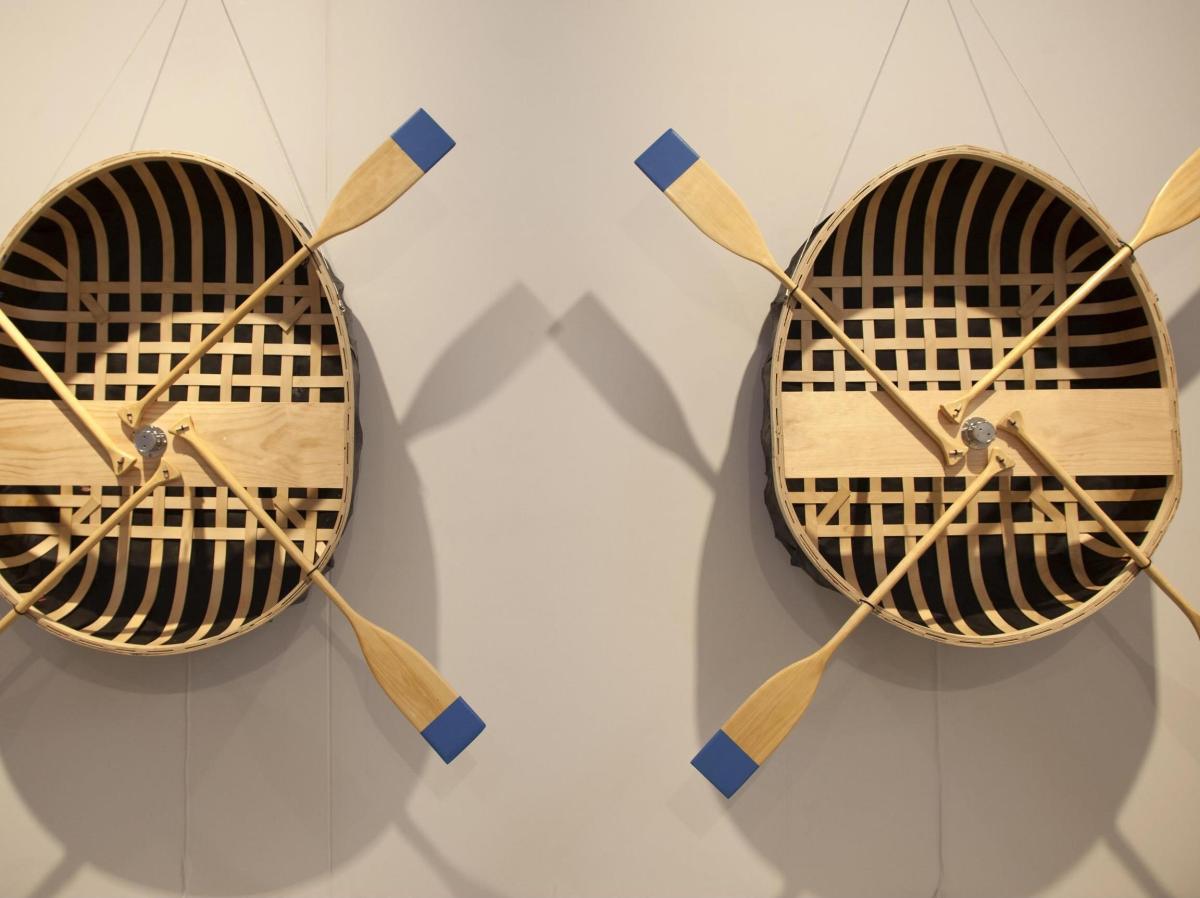Image: Nigel Helyer, Diatom, 2017. Timber, fabric, x2 channel soundscape, audio resonators 400cm x 250cm x 60cm. Photo courtesy of the artist. Supplied.
One of the sections in the novella ‘The Deluge Ark(ive): A small atlas of voyages,’ the book that accompanies this exhibition, is titled: The present overwhelms the future. This title is a fitting descriptor of both the present environmental and political climate, and the exhibition itself.
In visiting this exhibition, we are reminded that, not only is the present overwhelmed by the past, by the ancient events that inspired this work, but also that the present is indicative of the future, a future that may well be a rewriting of that same past. The temporal landscape on which this work is presented is a shifting one, one that speaks not only of the past and the future, but also of the here and now.
The work is predicated on the story of floods thirteen thousand years ago, when ‘the ice began to melt; the oceans began to rise and the land to flood.’ It is built on maritime mythology as much as on historical memory. Standing in the exhibition space, enveloped by the soft sounds emitting from the six nautical sound sculptures, one feels present, whilst simultaneously absent, elsewhere. One is caught up in the net of the ark, drifting on the sound of the sea.
The sonic element of art is something artist Nigel Helyer is well versed in, and well known for producing. His work is not static, nor is it singular in its materiality. It is work for the senses. The pale wood of the two canoe shells of ‘Border’ tempt one to touch, leaning closer to hear Helyer’s voice emerging, ghostly, from the skeletal frames. The orange twine that binds the wooden slats together add a further striking quality to the two beautifully tactile objects.
In addition to the six sound sculptures, seventeen intricate paintings by Turkish artist Öykü Özer (all of which feature in the accompanying novella) are also on display. These pieces are remarkable in their delicate beauty, their fine use of colour and their somewhat melancholy tone. While I would have enjoyed seeing the paintings in closer proximity to the sculptures, in conversation with the physical shapes of the exhibition, I also appreciated having the space to examine their detail in isolation. They are evocative accompaniments to the stories Helyer has written.
Özer’s skill in applying line to paper is complementary to Helyer’s skill in shaping wood and sound. The passage of collaboration between the two artists is clear; the threads of narrative between sculpture, image, sound and text are tightly woven, deftly wrought.
In the exhibition notes, Heyler writes: ‘Our blood and tears have the same salinity as the ocean. It is a reminder of the origin of all life on the planet and a warning that we share our well-being with our vast and indifferent mother.’
The project arose from looking at the past; from looking into the pre-historic creation of the Black Sea. The project is historically situated in a long-distant past. However, it also speaks to the present moment and to the potential for future catastrophe on this delicate earth. In so doing, the exhibition speaks of the continued strength of water, of an ocean that takes lives and homes, takes pieces of land and turns them back into sea.
It is a reflective exhibition as much as a suggestive one, and it continues to resonate, even once the sounds can no longer be heard.
Rating: 4 ½ stars out of 5
Deluge Ark(ive)
Artists: Nigel Helyer and Öykü Özer
Moonah Arts Centre, Hobart
17 November – 16 December 2017
View: www.sonicobjects.com





